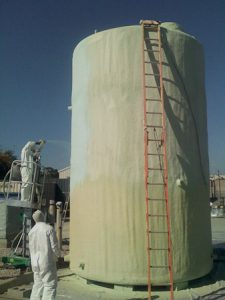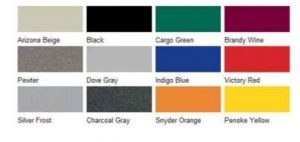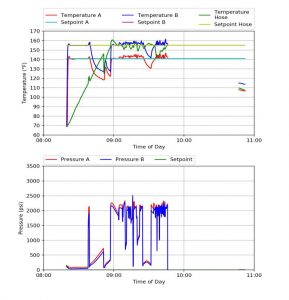Spray foam insulation isn’t just for attics and residential buildings. Industrial storage tanks also benefit from spray foam as a form of tank insulation for the liquids inside.
What is a Storage Tank?
 Storage tanks are used by businesses to contain liquids such as alcohol, wine, water, or oil or gases. Temperature changes can negatively affect the quality of the substances stored inside, even if it’s just a degree or two difference. This is why storage tank insulation is so important for both hot and cold storage as it directly affects the stability of the products inside. A foam system for storage tanks is an excellent way to preserve the integrity of the product and ensure the best insulation for the tank.
Storage tanks are used by businesses to contain liquids such as alcohol, wine, water, or oil or gases. Temperature changes can negatively affect the quality of the substances stored inside, even if it’s just a degree or two difference. This is why storage tank insulation is so important for both hot and cold storage as it directly affects the stability of the products inside. A foam system for storage tanks is an excellent way to preserve the integrity of the product and ensure the best insulation for the tank.
How is Spray Foam Applied?
Spray foam adheres to the surface of the tank, which creates a barrier and weather-tight seal between the environment and the tank. Because it conforms to the shape of the tank, the insulation is versatile to many different shapes and sizes of storage tanks. A foam storage tank needs to be properly prepared prior to application, which generally includes a high-pressure cleaning or degreasing to ensure the foam adheres properly. Closed-cell spray foam is recommended to insulate foam chamber storage tanks. Using special equipment to apply the spray, which consists of isocyanate and resin, the chemicals react by creating a tight foam, and cures within seconds.
Why is Spray Foam Tank Insulation the Best Option?
Spray foam insulation is ideal for many different storage tanks, specifically because it has an R-Value of >6.5 / inch of thickness, which can keep energy costs related to heating or cooling the tank significantly lower. Spray foam insulation tanks are actually more structurally sound, as an added benefit of foam is it increases the integrity of the object being insulated. Spray foam adapts to the tank, eliminating voids while sealing out moisture and air.
How durable is A Foam Insulated Storage Tank?
Another reason spray foam is great for storage tanks is because of its longevity. Spray polyurethane foams have a track record of over 30 years withstanding weather elements, temperature changes, etc. Studies conducted on commercial spray foam roofs, considered one of the harshest environments in the industry, show that spray foam ages excellently, and when sealed properly isn’t subject to UV degradation. Additionally, because foam insulated tanks are structurally improved, the spray foam option is perfect for ensuring integrity of the storage tank.
To learn more about spray foam insulation or start your storage tank insulation business, contact us here.









Is there any issue using closed cell spray foam to insulate a tank that will hold liquids at 200 degrees F? Any additional steps necessary for application?
Thanks for your help.
Hi Steve,
When you get over 180 degrees we ask that you please contact the manufacture directly at 1800-331-0196 or gaco.com for assistance. Thank you!